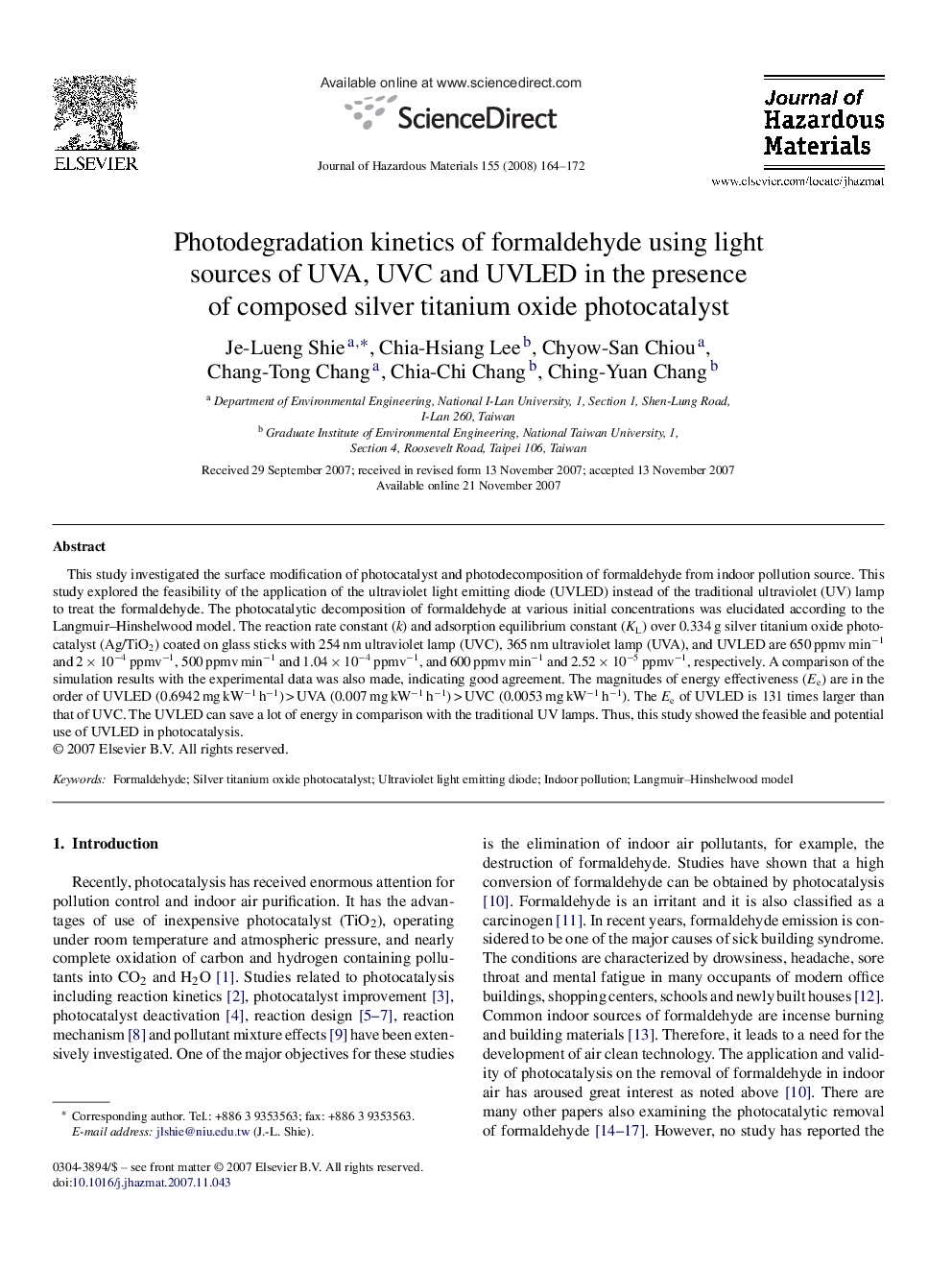| Article ID | Journal | Published Year | Pages | File Type |
|---|---|---|---|---|
| 583414 | Journal of Hazardous Materials | 2008 | 9 Pages |
Abstract
This study investigated the surface modification of photocatalyst and photodecomposition of formaldehyde from indoor pollution source. This study explored the feasibility of the application of the ultraviolet light emitting diode (UVLED) instead of the traditional ultraviolet (UV) lamp to treat the formaldehyde. The photocatalytic decomposition of formaldehyde at various initial concentrations was elucidated according to the Langmuir-Hinshelwood model. The reaction rate constant (k) and adsorption equilibrium constant (KL) over 0.334 g silver titanium oxide photocatalyst (Ag/TiO2) coated on glass sticks with 254 nm ultraviolet lamp (UVC), 365 nm ultraviolet lamp (UVA), and UVLED are 650 ppmv minâ1 and 2 Ã 10â4 ppmvâ1, 500 ppmv minâ1 and 1.04 Ã 10â4 ppmvâ1, and 600 ppmv minâ1 and 2.52 Ã 10â5 ppmvâ1, respectively. A comparison of the simulation results with the experimental data was also made, indicating good agreement. The magnitudes of energy effectiveness (Ee) are in the order of UVLED (0.6942 mg kWâ1 hâ1) > UVA (0.007 mg kWâ1 hâ1) > UVC (0.0053 mg kWâ1 hâ1). The Ee of UVLED is 131 times larger than that of UVC. The UVLED can save a lot of energy in comparison with the traditional UV lamps. Thus, this study showed the feasible and potential use of UVLED in photocatalysis.
Related Topics
Physical Sciences and Engineering
Chemical Engineering
Chemical Health and Safety
Authors
Je-Lueng Shie, Chia-Hsiang Lee, Chyow-San Chiou, Chang-Tong Chang, Chia-Chi Chang, Ching-Yuan Chang,
